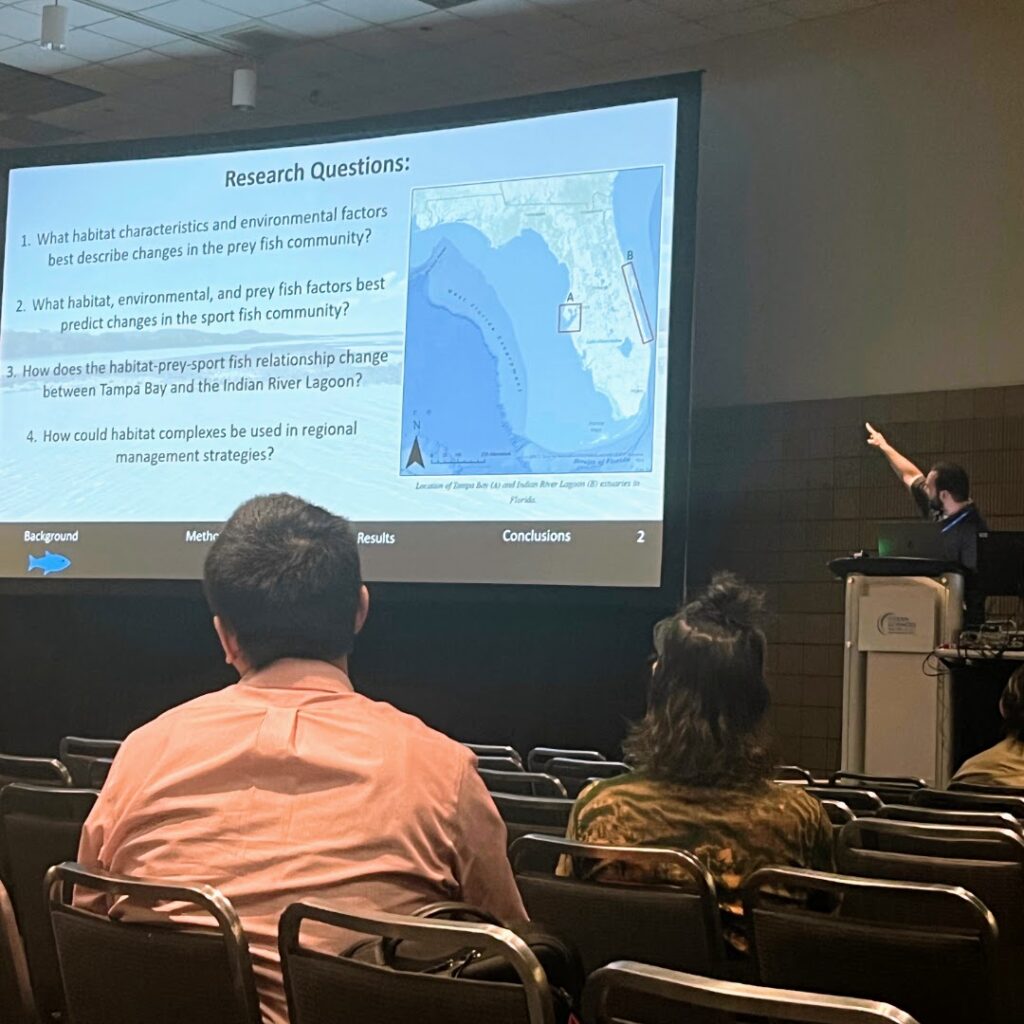From Discipline Commentary to Knowledge Galore! Modeling Fish Abundance Throughout Seascape Spatial Complexes – Cyber Tech
Chris Crowder is a 2025 Florida Sea Grant Man Harvey Fellow. He’s a Ph.D. candidate in integrative and conservation biology on the College of Central Florida. He joined Florida Sea Grant as a 2024 graduate analysis fellow for his work in Dr. Geoffrey Cook dinner’s Marine Ecology and Conservation Lab in UCF’s Biology Division.
Crowder holding a Sheepshead in Mosquito Lagoon. Picture by Chris Crowder.
When biology college students are first launched to the scientific methodology, they’re typically inspired to look at the pure world and ask, “Why is it that approach?” From there, the method usually includes background studying, accumulating information, and performing information evaluation to uncover attainable solutions. My present analysis adopted that precise trajectory: it started with a discipline commentary and ended with a mountain of information.
From 2019 to 2021 I used to be scaring child fish at Ball State College to grasp how simulated predation danger could impression the behaviors of embryonic and larval prey fish. After this, I used to be lucky to affix Dr. Geoffrey Cook dinner’s Marine Ecology and Conservation Lab on the College of Central Florida. Through the first 12 months of my PhD, the lab was conducting fish sampling in Mosquito Lagoon, a part of the bigger Indian River Lagoon system. I seen one thing intriguing: one pattern web site on an oyster reef had an abundance of fish, whereas one other web site simply 50 ft away had only a few. I needed to grasp what may trigger such stark variation in fish abundance over such a small distance.
Wholesome fish habitat, like oyster reefs, is the inspiration of a wholesome fishery. Florida’s fisheries can assist a wide range of leisure actions for various teams of people whereas concurrently benefiting the native and state economies. Making certain the sustained manufacturing of those ecosystem providers and leisure alternatives for future generations would require a greater understanding of benthic habitat and broader environmental pressures throughout a number of trophic ranges of fish and spatiotemporal scales.

Crowder presenting analysis outcomes on the 2024 Ocean Sciences Convention in New Orleans, LA. Picture by Chris Crowder.
It’s difficult to pin down precisely what attracts or repels fish from a particular location. Elements like water temperature, salinity, habitat sort, or prey availability all play a task. However fish may additionally reply to circumstances not instantly seen on the time and place of sampling. I needed to ask: Are the fish right here due to one thing they like? Are they avoiding one thing they don’t like? Or are they right here just by probability? Gaining perception into these questions can advance our understanding of how environmental components, prey species, and predator species interactions change all through time and house.
To reply these questions, I turned to a number of state businesses for assist. I’ve collaborated with the FWC Fish and Wildlife Analysis Institute’s Fisheries-Impartial Monitoring (FIM) Program which has fish neighborhood monitoring information that’s really unmatched by way of information high quality protocols in addition to spatial and temporal protection. I chosen a number of sport fish taxa that had been comparatively widespread and are a favourite amongst sportfishers: Snook, Snapper, Trout, Crimson Drum, and Crevalle Jack. I then chosen the highest 9 prey taxa representing roughly 80% of the fish weight-reduction plan from the game fish. I then mixed the FIM information with habitat information from the Southwest Florida Water Administration District for Tampa Bay and the St. John’s River Water Administration District for the Indian River Lagoon.